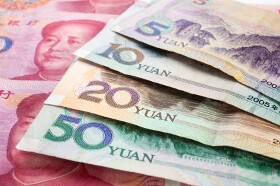
The Chinese yuan is extending its losing streak against a basket of major currency rivals on Tuesday. The yuan, which recently suffered its worst one-day drop in seven months, slumped on slightly lower-than-expected trade data. With more economic data being released this week, the yuan could come under a lot of pressure and reverse its significant 2020 rally.
According to the General Administration of Customs, China’s trade surplus slipped to $37 billion in September, down from $58.9 billion in August.
Exports ballooned 9.9% from the same time a year ago to $239.8 billion. The market had forecast a 10% surge. Imports popped 13.2% to $202.8 billion last month, coming in a lot higher than the median estimate of 0.3%. Beijing sold more refined products, medical supplies, and aluminum. It acquired more crude oil, natural gas, copper, iron, steel, soybeans, and rubber.
For the sixth consecutive month, China has reported an increase in new motor vehicle sales. The China Association of Automobile Manufacturers (CAAM) found that car sales surged 12.8% year-over-year to 2.57 million in September. Beijing witnessed a boost across-the-board, led by new energy vehicles (67.7%), trucks and vans (40%), and passenger vehicles (8%).
Later this week, China will report the third-quarter gross domestic product, inflation, retail sales, and unemployment.
In addition to economic data, monetary policy has been one of the yuan’s driving factors in the last two trading sessions.
On Monday, the People’s Bank of China (PBoC) announced that it is slashing the reserve requirement ratio (RRR) for banks when acquiring foreign exchange for clients. The measure would remove the mandate for financial institutions to set aside enough cash to cover yuan forward transactions. The market is split if this action is to curb the yuan’s ascent, or to support the recovery in the world’s second-largest economy.
The central bank will need to strike a fine balance between monetary policy and currency fixing. With the US government soon to release its watchlist of potential currency manipulators, China could make the list if it intervenes in the forex market too much. A weaker yuan is good for the export-oriented economy since it makes it cheaper to buy its products. However, the yuan had been soaring to a 17-month high in both onshore and offshore trades.
The USD/CNY currency pair rose 0.01% to 6.7466, from an opening of 6.7459, at 17:14 GMT on Tuesday. The EUR/CNY tumbled 0.66% to 7.9168, from an opening of 7.9699.
If you have any questions, comments, or opinions regarding the Chinese Yuan, feel free to post them using the commentary form below.